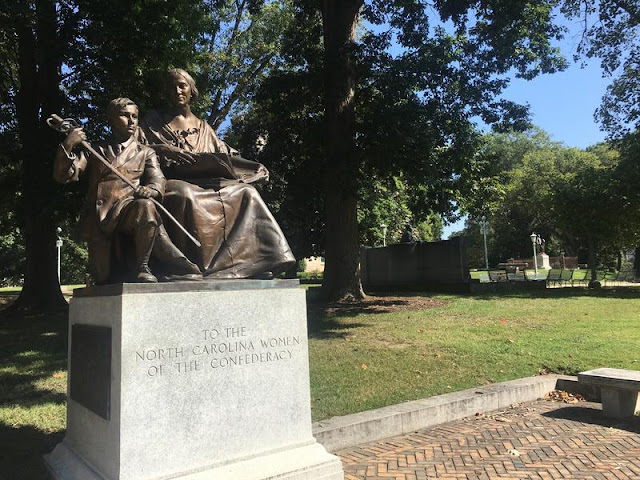Marc Chagall, 1965. Photo: Yousuf Karsh
My Hands were too soft..I had to find some special occupation, some kind of work that would not force me to turn away from the sky and the stars, that would allow me to discover the meaning of life."
- Marc Chagall
This past Friday was the last day of Methodist University's exhibit of Marc Chagall's The Story of the Exodus. It was on display in the David McCune International Art Gallery from February 8 through April 6. Our family literally arrived at the last hour of the exhibit. I'm so glad we decided to go!
Christians have just celebrated Easter. Of course, that means that the Jewish community has also just celebrated Passover; a festival that celebrates the liberation of the nation of Israel from slavery in Egypt. Easter and Passover always go hand in hand because Jesus was arrested during the week of Passover. So, The Story of the Exodus was a perfect exhibit for this time of year and the opportunity to see such an extraordinary collection of art by a renown Jewish artist was a privilege. It was the first time that this collection of lithographs has been displayed in the United States.
The details of Marc Chagall's life are fascinating and his artwork is interesting but I had never been aware of him before. Once I began to look at some of his artwork, however, I realized that I have been exposed to it all of my life. The very idea of Fiddler on the Roof came from Chagall's painting of his memory of his uncle fiddling on the roof. Images of serene cloud-like people floating in the sky are also common to his work. Chagall, himself, is sometimes portrayed in his paintings; floating over them, much like the music of his uncle's fiddle.
Chagall was a modernist, surrealist painter who dabbled in sculpture, tapestry work, and stained glass, also. His art reflects a colorful blend of family, and village or city life, with interjections of social and political concerns of his time, to include Nazism. Jewish and Christian imagery surfaces in his work, but in unexpected ways that can be simultaneously disturbing and endearing. It is clear that he was true to himself.
Chagall's paintings make you think. In fact, I would have liked more time in the gallery to just stare and think but people were coming along behind me, eagerly awaiting their turn. My six-year-old was darting about, and constantly tapping my arm to ask for paper. My father, with his cane, his dementia, and his brittle bones, was scooting through the exhibit too quickly for me. It wasn't easy to relax and focus on Chagall's art. Yet, somehow, all of those inhibiting, confusing, colorful family dynamics, seemed perfectly appropriate for viewing his exhibit.
I felt understood, accepted and just "okay" as I was surrounded by Chagall's art. In fact, I would venture to say that I felt smiled upon. It was familial in that it was messy but intentional. You couldn't always make much sense of what was being depicted on the lithographs, and especially not at first sight. Colors and images bled across each other in confusing ways. It was chaotic and captivating, righteous and vile, triumphant and humiliating, clear and cloudy, embarrassing and blessed all at once. I saw it as a brilliant effort to capture the human experience of en medias res (in the middle of things).
As I approached the end of the exhibit, my fifteen-year-old son took his grandfather's arm to steady him. My thirteen-year-old daughter shepherded my six-year-old son away and my husband stood puzzling over another painting. For a brief moment, I was free to stand there alone and look at the final painting of the exhibit.
This lithograph depicted Moses in all white for the first time. Elsewhere, he had been painted in various colors. In this image, he floated above a grounded, colorful, thoroughly distracted group of people as he shared the law with them. Meanwhile, a figure carrying a baby floated casually and unseen over their heads while an angel used a cloud to obscure the vision of some of the people. Very few faces were turned towards Moses but Moses didn't seem concerned about that. Much like the crowd of people below, he seemed too absorbed in his own experience and vocation to notice much about what was going on around him. I stood there wondering whether that was good or bad or just an accurate depiction of humanity.
|






